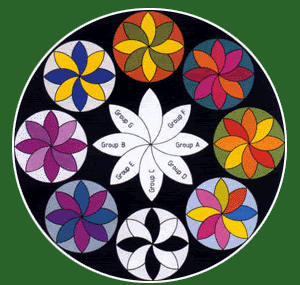Adapted from the 1991 book Simply Halston by Steven Gaines, a TV mini-series of five episodes was ordered by Netflix in September 2019, and it premiered on May 14, 2021, starring Ewan McGregor in the eponymous role of Roy Halston Frowick. The man who invented himself came from a dreadful Midwestern background, a childhood spent in a farmhouse with an abusive father who yelled, and a mother who was cheered up by the boy's own handicraft, a feathered hat. So he started as a milliner. Much like Chanel, for that matter. As exhibition curator Patricia Mears notes on Halston's style, “One of the great aspects of his success was his ability to balance beauty and modernity." Nowhere is this more evident than in his eponymous fragrance, Halston for Women, also referred to nowadays as Halston Classic.
There is a great scene in episode three, Sweet Smell of Success, in which Halston sits down with a respected woman perfumer, called Adèle, played by Vera Farmiga, to talk about developing his first fragrance, Halston. He is asked to select things which are meaningful to him. In the script, the designer selects orchids, because they're beautiful; tobacco, because he's constantly drawing from a cigarette; and his lover's jockstrap, because he's a semi-closeted gay man. (We're even shown the alleged perfumer sniff the used jockstrap deeply at some point...) At the time, the lover referred to was Victor Hugo, a Venezuelan student who arrived at Halston's studio to work as an assistant, and who became his lover for a decade.
But great as the perfume-making scene might be dramatically, giving a glimpse into the consulting process with a client—replete with tiny bottles of essences and blotters being dipped into them and sniffed—it fails to convey the true spirit of the fragrance in question. It was a tall order no doubt, as a passing mention of three things that seem to serve as symbols, rather than tales in themselves, is no more revealing than the fragrance industry's recent tendency to drop three notes to consumers and expect them to get crazy over their newest launch. There was definitely ground for exploration and tense dramatic antithesis, serving as a psychological outlet for the hero, letting us glimpse his repressed emotions, but it's mainly that. There is no really controversial element in the actual perfume, as I recall. It's actually one of the starchiest and loveliest of the classic chypres of the 1970s.
The formula was developed with one of the truly greats, but not by a woman—by a man. Bernard Chant is a legendary perfumer at IFF, who is revered for the majority of Aramis men's fragrances and most Estee Lauder women's fragrances, from the starchy aldehydic Estee to the big floral Beautiful, as well as seminal chypre fragrances such as Cabochard Gres, Clinique Aromatics Elixir, Imprevu Coty, and Lauren Ralph Lauren. Halston Classic was one that cemented his good taste and excellence of execution.
There is something creamy, warm, and intimate about Halston Classic, although one would never in a million years classify it as animalic. But it's definitely a product of its time, still relevant after all these years because it's streamlined, feels high class, and exudes good taste. One can never offend in Halston, but it's much more memorable than innocuous "office friendly fragrances." The oakmoss, while there, is never in your face, much like the case with Caleche, making it an easy-to-adopt woody chypre, even for chypre-phobics.
Official perfume notes for Halston for Women (Halston Classic)
Top notes: Green Leaves, Mint, Melon, Bergamot, and Peach
Middle notes: Marigold, Carnation, Cedar, Orris Root, Rose, Jasmine, and Ylang-Ylang
Base notes: Oakmoss, Amber, Vetiver, Incense, Patchouli, Sandalwood, and Musk
.jpg)









